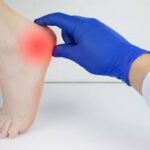Stem cell therapy is a treatment in regenerative medicine that uses the body’s natural healing mechanisms to address various conditions. This approach utilizes stem cells to repair damaged tissues and mitigate inflammation, benefiting those with musculoskeletal conditions. Understanding the process and applications of this therapy can help individuals make informed decisions about their treatment options.
What Is Stem Cell Therapy?
Stem cell therapy is a medical treatment that uses stem cells to promote healing and tissue regeneration. Stem cells are specialized cells that have the ability to develop into different types of cells in the body. They can differentiate into various tissue types, including bone, cartilage, muscle, and connective tissue.
The therapy typically uses mesenchymal stem cells, which are found in various tissues throughout the body, including bone marrow and adipose tissue. These cells possess regenerative properties that enable them to repair damaged tissue and mitigate inflammation at the treatment site. The process involves harvesting stem cells from the patient’s own body and then injecting them into the affected area.
What Conditions Does It Address?
This therapy can help treat various musculoskeletal conditions that cause chronic pain and limited mobility. Knee pain is a common complaint, particularly among patients with osteoarthritis or cartilage damage. The therapy may help reduce inflammation and promote cartilage repair in the knee joint.
Joint pain in various locations can be addressed through stem cell therapy. This includes conditions affecting the ankles, wrists, and other synovial joints where inflammation and tissue damage contribute to pain and stiffness. Arthritis, particularly osteoarthritis, is addressed through this treatment.
Sports injuries frequently involve damage to soft tissues, ligaments, and cartilage that may benefit from regenerative treatment. Shoulder pain caused by rotator cuff injuries, labral tears, or chronic inflammation may respond to this therapy. Hip pain, whether caused by arthritis, labral tears, or other degenerative conditions, also represents a suitable treatment application for this therapy.
What Does the Process Involve?
The process begins with a comprehensive evaluation to determine if the patient is a suitable candidate for treatment. This evaluation includes reviewing medical history, conducting physical examinations, and analyzing imaging studies to assess the extent of tissue damage or degeneration. The treatment procedure typically involves two main steps: harvesting and injection. During the harvesting phase, stem cells are collected using minimally invasive techniques.
Following harvesting, the stem cells are processed and concentrated in a laboratory setting. This preparation step separates the stem cells from other components and creates a concentrated solution for injection. The prepared stem cells are then injected directly into the affected area using imaging guidance to achieve precise placement.
What Are the Benefits?
This therapy offers several potential advantages for patients with chronic pain conditions. The treatment utilizes the patient’s own cells, thereby reducing the risk of rejection or adverse immune reactions. This autologous approach offers a natural treatment option that leverages the body’s existing healing mechanisms.
Patients may experience short recovery times and can return to normal activities quickly. The outpatient nature of the treatment allows patients to receive care without requiring hospitalization. Pain reduction and improved function are the primary therapeutic goals of this therapy. The regenerative properties of stem cells may help slow the progression of degenerative conditions and promote long-term tissue health.
Learn More About Regenerative Medicine
Stem cell therapy provides a treatment option for individuals experiencing chronic pain from various musculoskeletal conditions. The therapy offers a regenerative approach that uses the body’s natural healing capabilities to address tissue damage and inflammation. Consult a qualified medical professional to determine if this therapy is appropriate for your specific condition.







